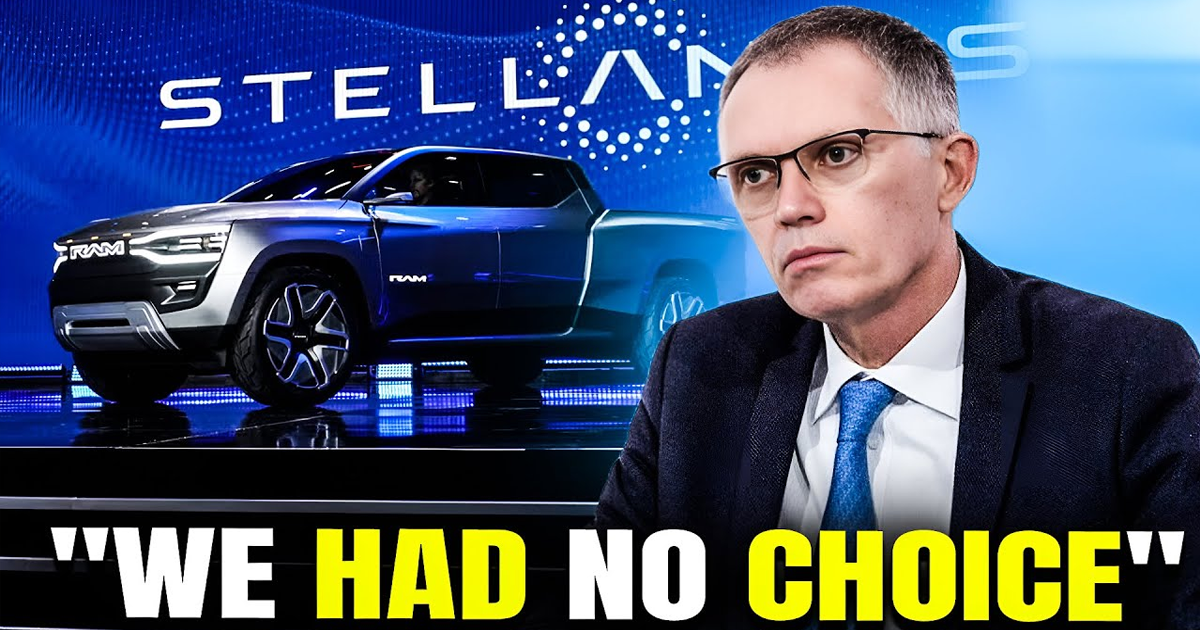New Issues: Stellantis CEO Flags US Vehicle Repair Surge

Quality Control Issues Plague Stellantis’ US Production
Carlos Tavares, the CEO of Stellantis, has raised serious concerns about the quality of vehicles coming off the production lines in the United States. The problem has become particularly evident with the new Ram 1500 trucks manufactured at the Sterling Heights Assembly Plant in Michigan. According to Tavares, an excessive number of these vehicles require immediate repairs before they can be shipped to dealerships. This revelation has significant implications for the company’s operations, costs, and profitability.
Impact on Shipments and Costs
The necessity for post-production fixes is causing substantial delays in vehicle shipments and inflating manufacturing costs. Stellantis faces a challenging situation where vehicles that should be rolling off the assembly line in perfect condition are instead heading to repair bays. This inefficiency is referred to as a poor direct run rate (DRR), which measures the proportion of vehicles that pass quality control without needing additional work. The current DRR at Stellantis’ US plants, especially Sterling Heights, is “not good,” according to Tavares.
Financial Strain and Profit Decline
These quality control issues are compounding Stellantis’ financial woes. The company reported nearly a 50 percent drop in profits for the first half of 2024, a downturn that Tavares attributes partly to the cost and delay of these repairs. As Stellantis grapples with these production challenges, the financial strain becomes more pronounced, affecting its overall business stability.
The Ram 1500: A Case Study in Manufacturing Challenges
The Ram 1500 serves as a prime example of the broader issues plaguing Stellantis’ US operations. This popular truck, known for its performance and durability, is now a symbol of the company’s production woes. Tavares highlighted that not only are these trucks requiring fixes post-production, but there are also problems with the trim levels being produced. Stellantis has been criticized for producing higher-end trims that were not in demand, resulting in these vehicles languishing on dealer lots.
Misalignment with Market Demand
Tavares believes that Stellantis has not been aligning its production with market demand effectively. The company should have focused on building configurations of the Ram 1500 that were more popular with consumers. Instead, the less popular, more expensive models have been overproduced, leading to inventory pile-ups and missed sales opportunities. This misalignment exacerbates the financial challenges and delays the time it takes for vehicles to reach customers.
Seeking Solutions and Stabilizing Operations
In response to these challenges, Stellantis is actively seeking solutions to improve its direct run rate and align production more closely with market demand. Tavares has emphasized the need to streamline operations, enhance quality control processes, and ensure that newly built vehicles meet the required standards before they leave the factory. The goal is to stabilize the business, reduce costs, and improve delivery times to dealerships.
The Broader Implications for Stellantis
The quality control issues in the US have broader implications for Stellantis as it navigates a competitive and evolving automotive market. The company’s reputation for reliability and quality is at stake, and addressing these production challenges is critical for maintaining consumer trust and brand loyalty. Additionally, the financial impact of these issues cannot be understated, as they directly affect the company’s bottom line and ability to invest in future innovations.
A Call to Action
Tavares’ candid admission of the problems facing Stellantis’ US operations is a call to action for the entire organization. It highlights the urgent need for improvement and the importance of maintaining high standards in manufacturing. As Stellantis works to rectify these issues, it must also focus on future-proofing its operations to prevent similar problems from arising.
The Path Forward
Moving forward, Stellantis aims to implement stricter quality control measures, optimize production processes, and better align its output with consumer demand. These steps are essential for restoring the efficiency of the production line, reducing costs, and ensuring timely delivery of vehicles. The company also needs to enhance communication and coordination between its manufacturing and sales teams to better predict and respond to market trends.
The Role of Leadership
Carlos Tavares’ leadership will be crucial in guiding Stellantis through this challenging period. His willingness to acknowledge the problems and take decisive action reflects a commitment to transparency and accountability. Under his guidance, Stellantis must foster a culture of continuous improvement and innovation to overcome these hurdles and emerge stronger.
Conclusion
The issues surrounding the production of US-built vehicles, particularly the Ram 1500, underscore the challenges Stellantis faces in maintaining quality and efficiency. Carlos Tavares’ recognition of these problems and his proactive approach to finding solutions are steps in the right direction. By addressing the root causes of these issues and realigning its operations, Stellantis can stabilize its business, improve its financial performance, and strengthen its position in the global automotive market. Photo Credit – autonews / autoevolution

